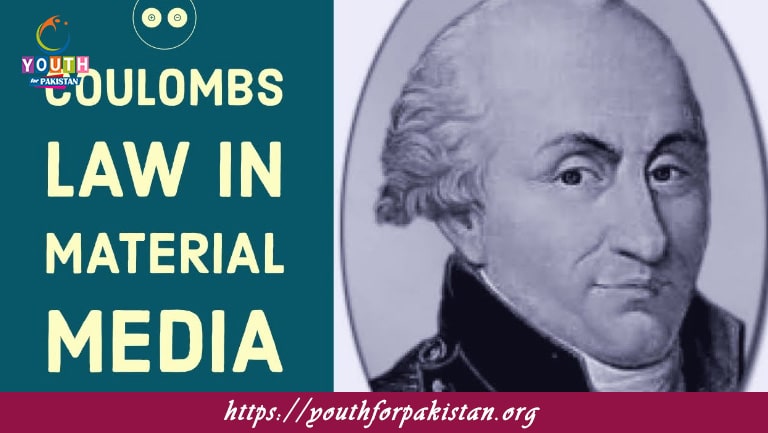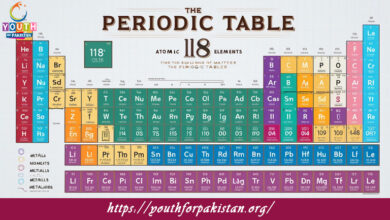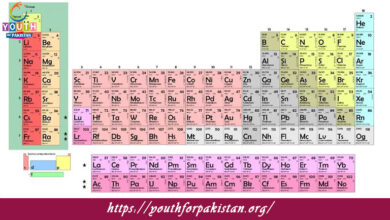Coulomb’s Law In Material Media MDCAT MCQs with Answers

Welcome to the Coulomb’s Law In Material Media MDCAT MCQs with Answers. In this post, we have shared Coulomb’s Law In Material Media Multiple Choice Questions and Answers for PMC MDCAT 2024. Each question in MDCAT Physics offers a chance to enhance your knowledge regarding Coulomb’s Law In Material Media MCQs in this MDCAT Online Test.
Coulomb’s Law In Material Media MDCAT MCQs Test Preparations
Coulomb’s law in a vacuum states that the force between two charges is proportional to:
a) The square of the distance between them
b) The product of their magnitudes
c) The sum of their magnitudes
d) The difference in their magnitudes
In a medium with dielectric constant εr, the force between two charges is:
a) Greater than in a vacuum
b) Less than in a vacuum
c) The same as in a vacuum
d) Zero
The force between two charges in a medium is:
a) Directly proportional to the dielectric constant
b) Inversely proportional to the dielectric constant
c) Independent of the dielectric constant
d) Directly proportional to the square of the dielectric constant
The dielectric constant of a medium is also known as:
a) Relative permittivity
b) Absolute permittivity
c) Electric susceptibility
d) Magnetic permeability
The force between two charges in water (dielectric constant = 80) compared to air is:
a) 80 times greater
b) 80 times smaller
c) 8 times greater
d) 8 times smaller
In a medium with dielectric constant εr, the effective force between charges is given by:
a) F = (1/εr) F0
b) F = εr F0
c) F = F0
d) F = (1/εr^2) F0
The electric field intensity in a medium is:
a) Greater than in a vacuum
b) Less than in a vacuum
c) Independent of the medium
d) Zero
Coulomb’s law in material media takes into account:
a) The magnetic properties of the medium
b) The dielectric properties of the medium
c) The density of the medium
d) The temperature of the medium
In a medium, the force between two charges depends on:
a) The nature of the medium only
b) The distance between the charges only
c) Both the nature of the medium and the distance between the charges
d) Neither the nature of the medium nor the distance
When a medium has a dielectric constant greater than 1, the force between charges:
a) Increases
b) Decreases
c) Remains the same
d) Becomes zero
The factor by which the force between two charges is reduced in a medium is called:
a) Relative permeability
b) Electric field constant
c) Dielectric constant
d) Magnetic susceptibility
The electric potential energy of a system of charges in a medium is:
a) Higher than in a vacuum
b) Lower than in a vacuum
c) Independent of the medium
d) Zero
The electric field in a medium with dielectric constant εr is given by:
a) E = E0
b) E = εr E0
c) E = E0 / εr
d) E = E0 εr^2
The dielectric constant of a medium affects:
a) Only the force between charges
b) Only the electric field
c) Both the force between charges and the electric field
d) Neither the force nor the electric field
In a medium with a dielectric constant of 4, the force between two charges is:
a) 1/4 of the force in a vacuum
b) 4 times the force in a vacuum
c) The same as in a vacuum
d) 1/2 of the force in a vacuum
The dielectric constant of a medium is a measure of:
a) The electrical conductivity of the medium
b) The ability of the medium to polarize
c) The mass density of the medium
d) The magnetic properties of the medium
The force between two charges in a medium with εr = 2 compared to air (εr = 1) is:
a) Twice as large
b) Half as large
c) The same
d) Four times as large
Coulomb’s law in a medium states that the force between two charges is:
a) Directly proportional to the square of the distance
b) Directly proportional to the dielectric constant
c) Inversely proportional to the dielectric constant
d) Independent of the dielectric constant
In a medium, the electric field intensity is reduced by:
a) ε0
b) εr
c) k
d) μ0
The presence of a dielectric medium between two charges:
a) Increases the electrostatic force
b) Decreases the electrostatic force
c) Has no effect on the electrostatic force
d) Increases the potential energy
In Coulomb’s law, the dielectric constant is represented by:
a) k
b) εr
c) μ
d) σ
The force between two point charges in a medium is inversely proportional to:
a) The square of the distance
b) The cube of the distance
c) The dielectric constant of the medium
d) The square of the dielectric constant
The effect of a dielectric medium on electric field lines is to:
a) Compress them
b) Expand them
c) Distort them
d) Increase their density
A medium with a high dielectric constant will:
a) Increase the force between charges
b) Decrease the force between charges
c) Have no effect on the force between charges
d) Make the force infinite
In a medium with dielectric constant 3, the electric field is:
a) One-third of the electric field in vacuum
b) Three times the electric field in vacuum
c) Equal to the electric field in vacuum
d) Zero
Coulomb’s law in material media is modified due to:
a) The presence of charges
b) The presence of a medium
c) The presence of electric current
d) The presence of magnetic fields
The ratio of the force between two charges in a medium to that in vacuum is:
a) Greater than 1
b) Equal to 1
c) Less than 1
d) Zero
The force between two charges in a medium compared to a vacuum is reduced by a factor of:
a) 2
b) εr
c) 1/εr
d) ε0
The electric potential difference in a medium is affected by:
a) The mass of the charges
b) The distance between the charges
c) The dielectric constant of the medium
d) The shape of the charges
When a dielectric is placed between two charges, the electric field:
a) Increases
b) Decreases
c) Becomes zero
d) Remains the same
The work done to move a charge in a medium is:
a) More than in vacuum
b) Less than in vacuum
c) Independent of the medium
d) Always zero
The force between two charges separated by a dielectric medium is:
a) Directly proportional to the dielectric constant
b) Inversely proportional to the dielectric constant
c) Independent of the dielectric constant
d) Zero
The electric field intensity in a dielectric medium is:
a) Greater than that in a vacuum
b) Less than that in a vacuum
c) Equal to that in a vacuum
d) Zero
The relative permittivity of a medium is:
a) The ratio of force in vacuum to force in the medium
b) The ratio of force in the medium to force in vacuum
c) The ratio of electric field in vacuum to electric field in the medium
d) The ratio of electric field in the medium to electric field in vacuum
Coulomb’s law can be applied to:
a) Only point charges
b) Only charges in a vacuum
c) Charges in any medium
d) Only moving charges
The dielectric constant is a property of:
a) Only solid materials
b) Only liquids
c) Only gases
d) All materials
In a medium with dielectric constant εr, the electric flux density is:
a) Decreased by a factor of εr
b) Increased by a factor of εr
c) Unchanged
d) Zero
In a medium, the permittivity is given by:
a) ε = εr ε0
b) ε = ε0 / εr
c) ε = ε0
d) ε = εr
The electrostatic force in a medium compared to a vacuum is:
a) Stronger
b) Weaker
c) Same
d) Dependent on temperature
The concept of permittivity is used to describe:
a) The strength of magnetic fields
b) The behavior of electric fields in a medium
c) The resistance of a material to current flow
d) The thermal properties of materials
If you are interested to enhance your knowledge regarding Physics, Chemistry, Computer, and Biology please click on the link of each category, you will be redirected to dedicated website for each category.




